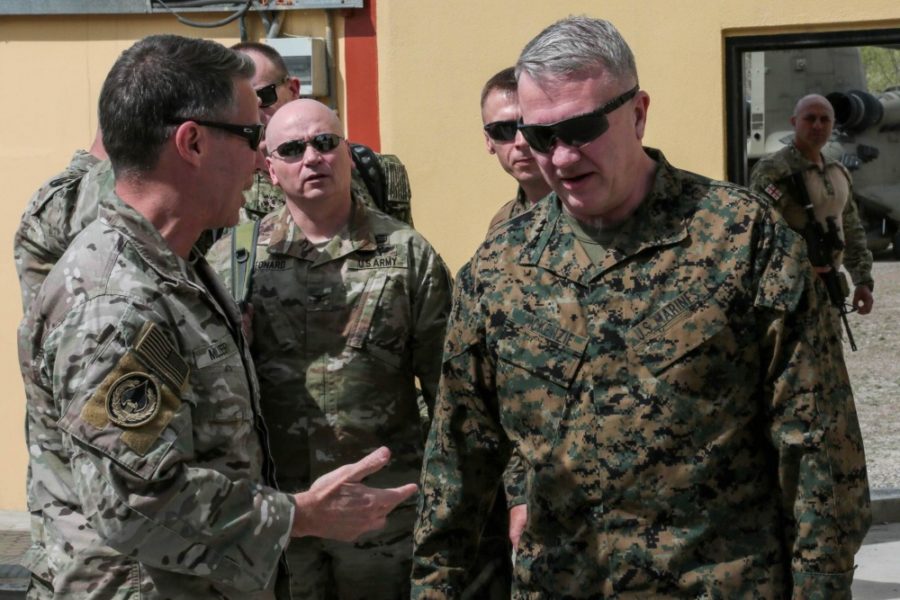U.S. forces in Afghanistan have a new commander for the waning days of the war who the Pentagon says will have the authority to conduct strikes in support of Afghan forces—something that has happened during the withdrawal, though the Defense Department will not provide specifics.
U.S. Central Command boss Marine Corps Gen. Kenneth F. McKenzie Jr. took command of U.S. Forces-Afghanistan and the Resolute Support mission during a July 12 ceremony in Kabul, accepting the reins from U.S. Army Gen. Austin Scott Miller, who has led USFOR-A since 2018 and was the longest-serving leader of the war.
Pentagon spokesman John F. Kirby, in a July 12 briefing, said the change of command does not mark the end of the war but is a milestone in the progression of the withdrawal. The move comes less than a week after President Joe Biden announced the mission would end by Aug. 31, ahead of the original Sept. 11 deadline. More than 90 percent of personnel and material already have been flown out of the country.
The Taliban has rapidly reclaimed territory across Afghanistan during the withdrawal, with the Afghan military largely retreating from rural areas.
Kirby said there have been “moments during the drawdown” when U.S. forces have supported Afghanistan, though the Pentagon would not provide any details about the timing or number of airstrikes to defend Afghan forces.
“It would be wrong to report there has been no support to Afghan forces in the field during the drawdown,” Kirby said, adding that the department would be “miserly” in what it reports and would protect its operational security.
Miller had authority to conduct strikes, and McKenzie now has the same authority “where and when he finds it feasible to do so,” Kirby said. B-52 bombers have deployed to Al Udeid Air Base, Qatar, and a carrier strike group also is operating in the region, providing air support for the retrograde.
Additionally, “the Afghans themselves have strike capability. They have a good air force, a solid air force,” Kirby added.
The Afghan Air Force has been almost completely reliant on U.S. contractors to maintain its aircraft, and the Pentagon has yet to detail exactly how this support will continue after the withdrawal, though officials have said support will be provided virtually or from another nation.
The U.S. is adding aircraft to the Afghan Air Force after the withdrawal, with plans to send 37 more HH-60 Blackhawk helicopters and three more A-29 Super Tucano strike aircraft.
U.S. officials are also working with Turkish leaders on what the future security situation will be at Hamid Karzai International Airport in Kabul, which currently houses American troops, aviation support, and defensive capabilities.
“I would expect that … to some degree, and in some way, that support will continue through the drawdown,” Kirby said.

